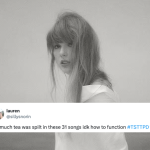
Today is Equal Pay Day, where we talk about the fact that women still earn significantly less than men in Australia (and all around the world).
And according to the Workplace Gender Equality Agency (WGEA), using data from the Australian Bureau of Statistics, full-time female employees across Australia earn 15.3% less than men, which amounts to a full $251.20 per week.
The financial and insurance services industry reports the largest salary gender pay gap (29.6%), followed by the professional, scientific and technical services industry (24.2%) and the construction industry (23.3%).
The industries with the lowest pay gaps are public administration and safety (5.9%), retail trade (9.0%), and the hodge podge of occupations that don’t fit anywhere else (other services – 8.7%).
“Australia has achieved genuine equality between women and men in education,” said WGEA Director Libby Lyons in a statement.
“However, the persistent gender pay gap reflects the barriers women face in accessing equivalent paypackets to men.
“This is bad news for the economy, because it shows that business is not drawing on the enormous talent available in the female workforce.”
The wage gap exists as soon as Aussies enter the work force and only increases with age, peaking in the 45–54 age group at 20.0%.

And we know what you might be thinking: babies! It’s the women taking time off work to have babies that’s doing it!
Well yes, and no. It’s a helluva lot more complicated than that, and anyone arguing nonsensically that ‘duh, women have to have kids because of biology so of course they get paid less’ should be fired into the sun.
The wage gap is influenced by any number of things, including: discrimination and bias in hiring and pay decisions; men and women working in different industries, with female-dominated industries attracting lower wages; women’s disproportionate share of unpaid care and domestic work; and a lack of flexibility in the workplace to accommodate said unpaid care and domestic responsibilities.
It means that women reach retirement age with significantly smaller savings than men, contributing to poverty in old age.
“[The wage gap] is a disaster for women, who are retiring with vastly smaller nest eggs than men due to the compounding effect of the gender pay gap and their far greater time spent on unpaid care work,” said Lyons.
“Closing the gender pay gap must be recognised as an urgent social and economic priority.”
The good news in all this is that the wage gap overall declined from 16.2% over the past 12 months, and the really good news is that increasing women’s participation in the workforce by 6% could add $25 billion a year to Australia’s GDP.
The bad news is…. er, everything else, really.



